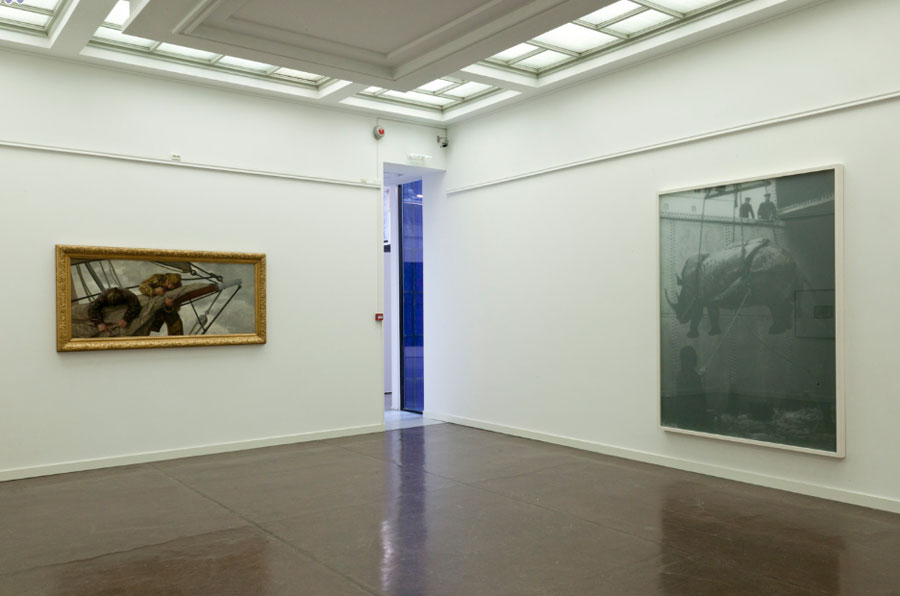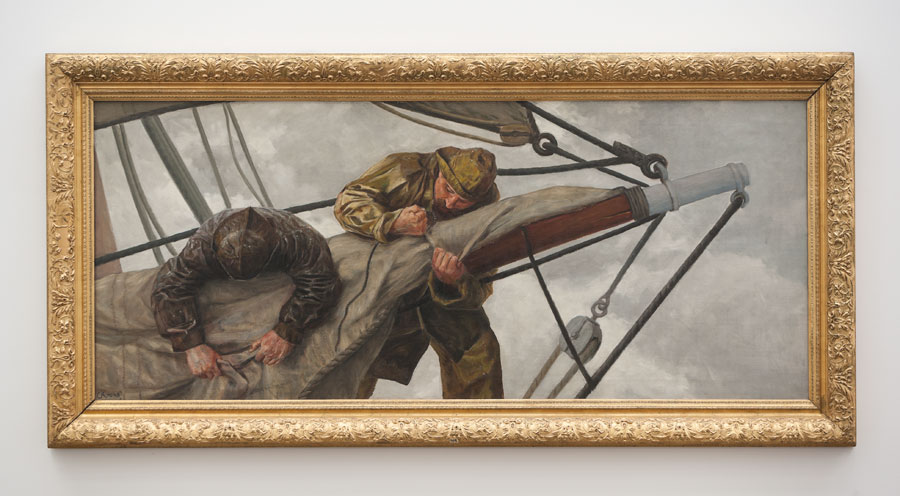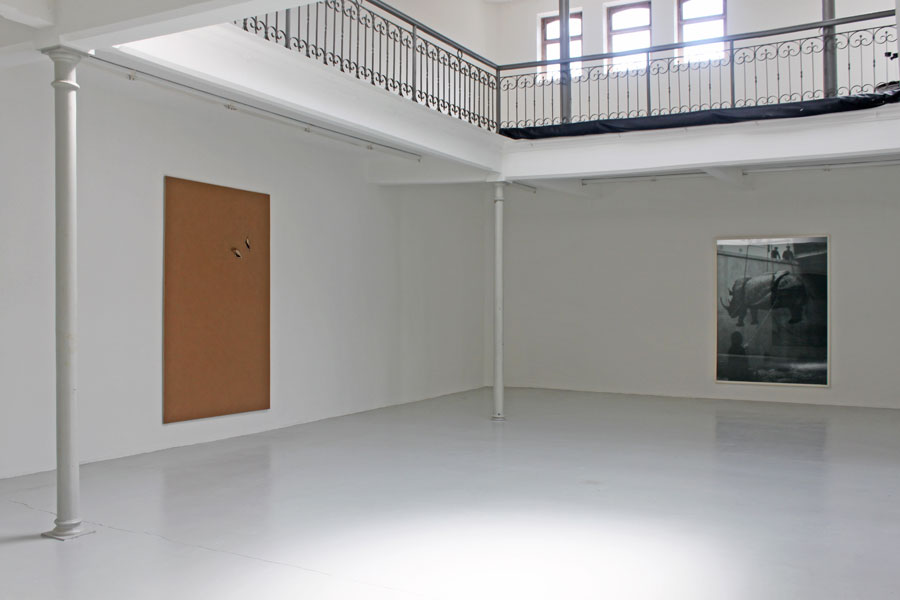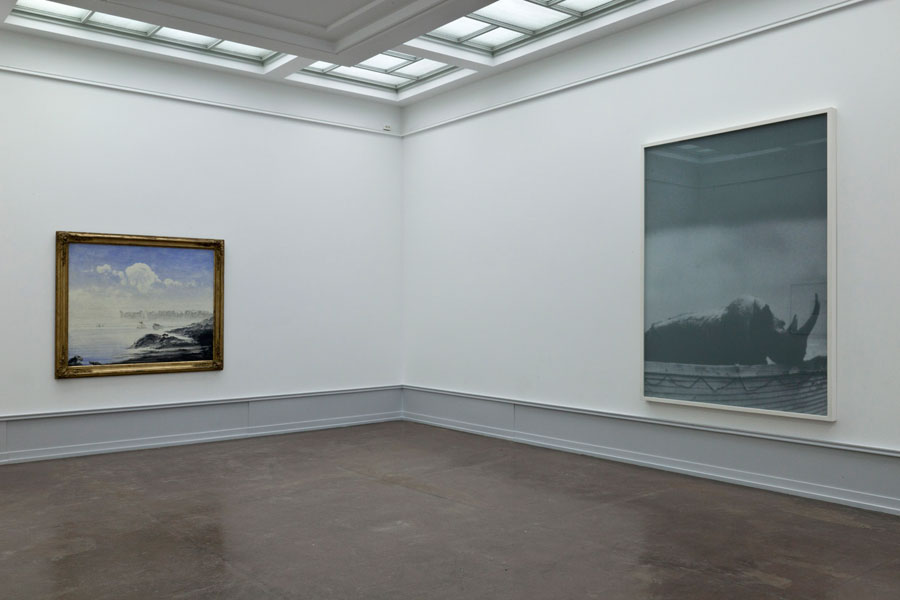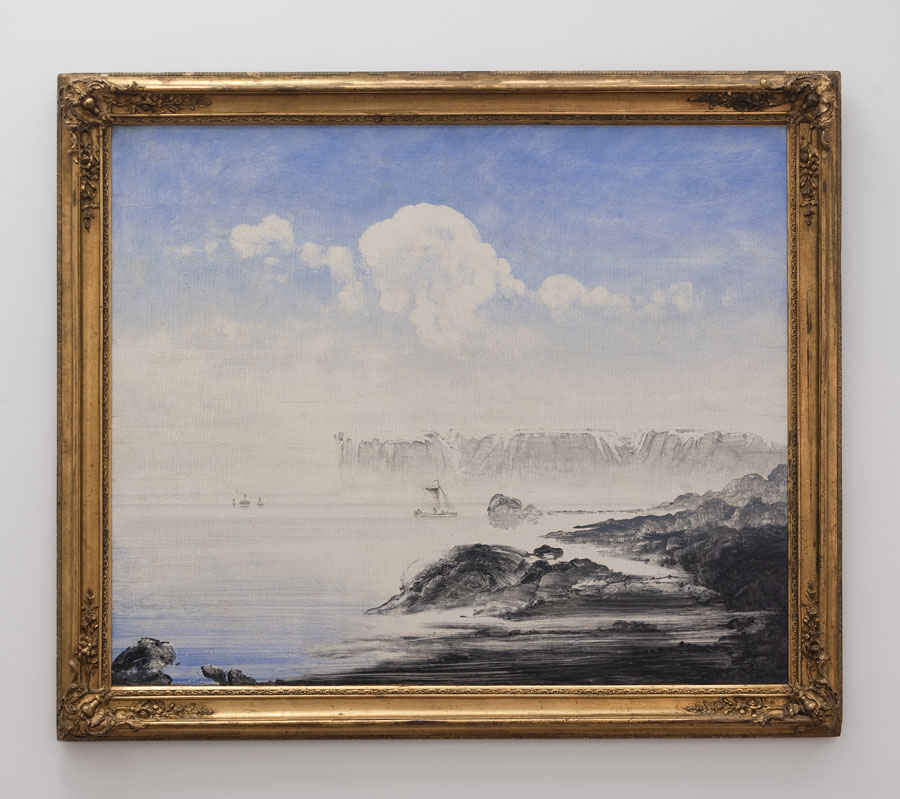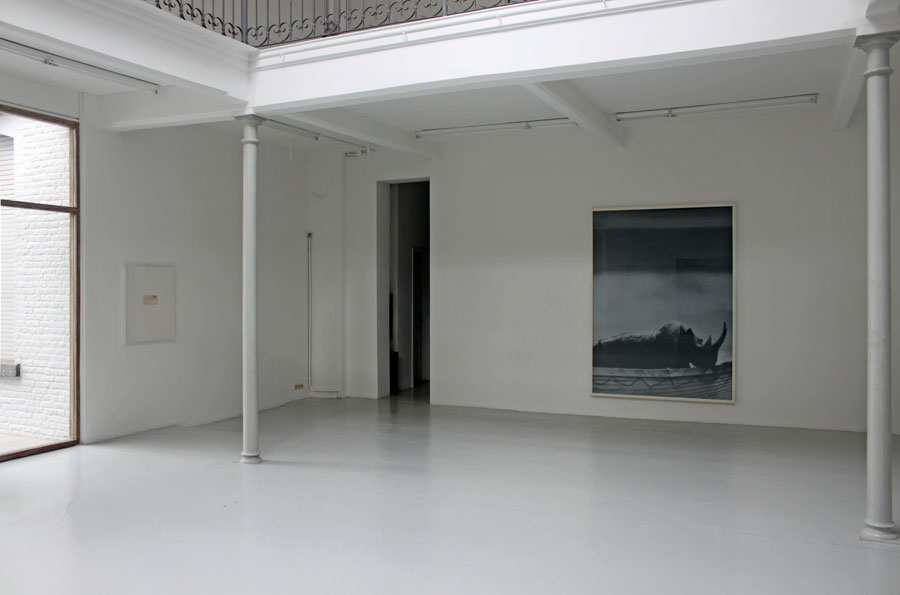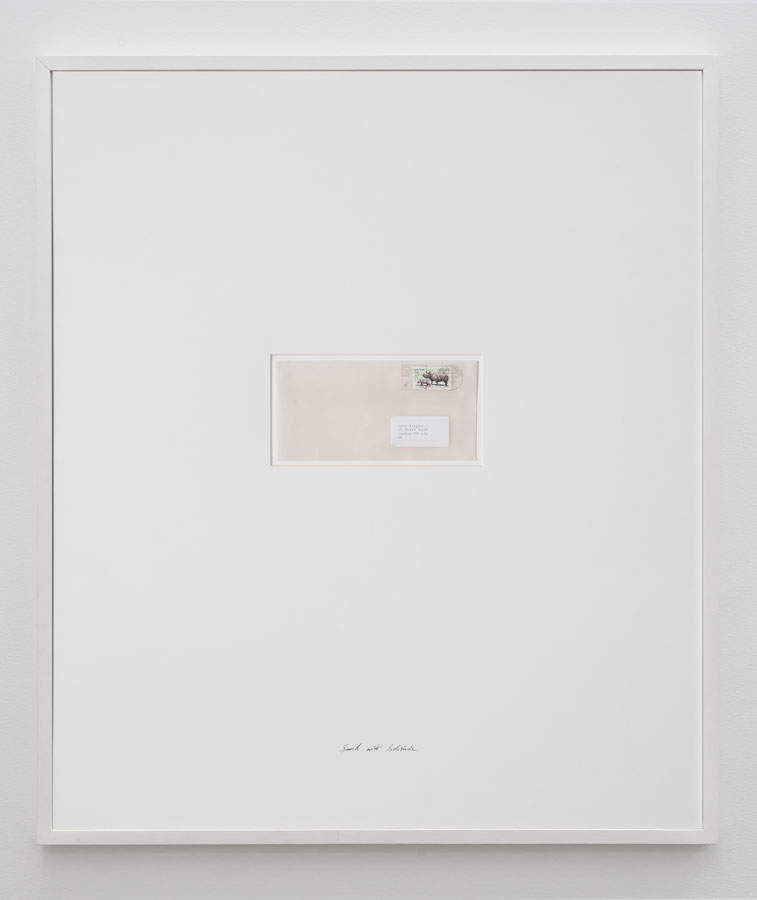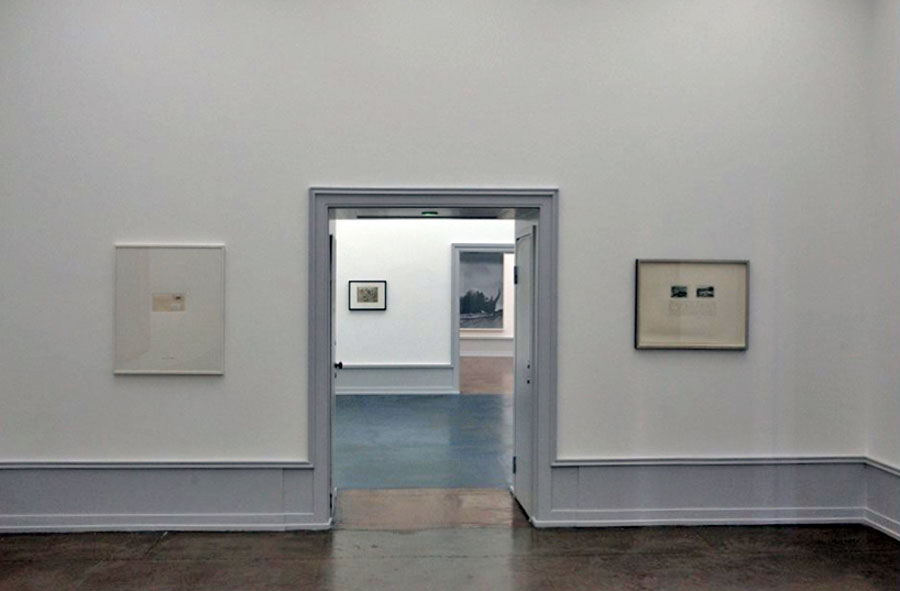Colette Dubois le faisait remarquer dans son article relatif à l’actuelle exposition de John Murphy : L’intervalle, comme l’ont remarqué les cinéastes Dziga Vertov et Jean-Luc Godard ou encore le philosophe Gilles Deleuze, est une affirmation du présent, celui du regardeur tout autant que celui du créateur. C’est donc d’un présent variable qu’il s’agit et qui est toujours à rejouer dans le moment du regard ; le temps – un temps anachronique et toujours renouvelé – devient un matériau formel au même titre que l’image, le papier ou la toile. Chez Murphy, ces intervalles entre mots et image sont présents dans chaque pièce et ils se multiplient dans le rapport entre les différents travaux de l’exposition. En effet, l’artiste envisage chaque présentation comme une nouvelle configuration des œuvres qui deviennent alors chacune le fragment d’une nouvelle constellation : tout se passe entre l’image et son titre, la relation aux autres images/titres dans un espace qui devient œuvre à son tour ».
Le mouvement, celui qui inaugure le voyage, ou la constellation, deux éléments bien présents dans l’exposition sont pour John Murphy ce qui active l’œuvre et son exposition. Ainsi, d’exposition en exposition, reconfigure-t-il souvent de mêmes œuvres en de nouvelles constellations. Ce n’est pas seulement une question de dispositif : la constellation est reliance, une volonté de comprendre le monde au-delà de lui-même, un jeu de lignes imaginaires traçant des figures qui nous permettent de les nommer.
Ainsi cet intervalle entre « Such are the coconuts of hidden Africa » et « Of voyage, of other place », cette exposition que John Murphy concevait, il y a un an, au Kunstmuseum de Trondheim en Norvège, ce dialogue, ce voyage dans les collections permanentes du musée. De même œuvres se retrouvent dans des configurations similaires et différentes, des « espaces autres ». On pensera bien sûr à l’hétérotopie chère à Foucault, cette localisation physique de l’utopie. L’hétérotopie peut juxtaposer en un seul lieu, même et surtout mental, plusieurs espaces eux-mêmes incompatibles dans l’espace réel, elle peut s’ouvrir et se fermer, ce qui à la fois l’isole, la rend accessible et pénétrable, elle porte en soi une rupture avec le temps réel. L’imaginaire s’installe ainsi tant entre les œuvres, en mouvement, qu’entre les expositions.
Christian Krohg (1852-1925), « Tre Rev » (photo : Anders Solberg/Trondheim kunstmuseum)
John Murphy
E la nave va, 2013
Photo work, 239 x 179,5 cm.
John Murphy
The Deceptive Caress of a Giraffe, 1993
Oil on canvas, 264 x 168 cm.
John Murphy’s exhibition in Trondheim kunstmuseum is the third in a line where contemporary artists are invited to exhibit side by side with works from the museum’s collection. In this way the collection will fold out in a new way each time, and different aspects will be emphasized depending on the selected works and thinking of the invited artist. Murphy’s part in the series is in its ways more profound than both the prior, as it is based on a thorough examination of the collection by the artist, and a larger space is used. OF VOYAGES, OF OTHER PLACES is staged in the whole first floor in TKM Bispegata.
The exhibition focuses on the ideas of notions of movement, changing of space(s) and travel. A basic idea about the voyage is the one where the traveller is setting out into unknown waters, the brave conquering of horizons, and the following gaze into something vast, overwhelming and unknown. To reach out and find places where ideas are challenged and leap ahead are made. But like all grand ideas the glory of travel also has a backside. Every traveller’s exotic destination is after all someone else’s backyard. There is also a touch of melancholia in the concept of traveling. As American novelist Ellen Glasgow put it: “All change is not growth, as all movement is not forward.” Arriving is so closely related to leaving, and memory will always walk alongside forgetting.
Foucault discusses the heterotopias, spaces of otherness, which are neither here nor there. These spaces can be both physical and mental at the same time, like the space for a phone call, or the room in a mirror, or take the doctor’s waiting room or the space behind the bordello’s curtains. These spaces do not only resist simple definitions, they are also what Foucault calls our «greatest reserve of imagination». Imagine the ship, the foremost heterotopia, moving across the water but at the same time a space without a space, a space of it’s own, exiting the imagination. Maybe we also should regard the exhibition space as heterotopia.
Peder Balke, Nordkapp, 1870
John Murphy
Sunk into solitude, 2013
Photo work, 239 x 179,5 cm
John Murphy
Sunk into Solitude, 2003
Envelop addressed to the artist, postmark and stamp, 86,5 x 74,5 x 3,5 cm.
[sociallinkz]
